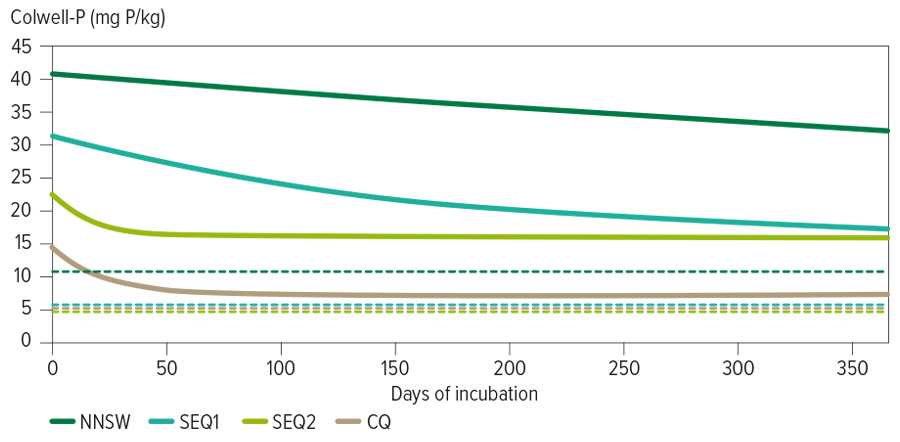Key points
- Deep banding of phosphorus has already improved uptake by an average of 3-4kg P/ha but the evidence suggests phosphorus may still be limiting crop yields
- Applying phosphorus in a larger soil volume may improve phosphorus use efficiency, depending on fertiliser reactions in different soil types
Expanding the volume of soil enriched with phosphorus has the potential to boost nutrient use efficiency
Subsoil banding has emerged from GRDC-invested University of Queensland research as a strategy to improve crop access to phosphorus fertiliser.
It provides plant-available phosphorus in soil layers that are not as susceptible to drying out between intermittent in-crop rainfall events. It is particularly effective on the vertosol soils in north-eastern Australia, where crops rely on stored soil moisture for extended periods.
Despite the consistent crop responses, there are concerns that crops struggle to obtain enough phosphorus from deep bands to meet crop demand and achieve the water-limited yield potential.
Financial benefit
The rate of phosphorus application is the single most important determinant of the magnitude and longevity of crop responses to deep bands.
Financial returns from a large up-front investment in deep-phosphorus application depend on responses in both the year of application and in subsequent years across a crop sequence.
Analyses across sites in Central and Southern Queensland have shown uniformly positive responses in cumulative gross margins of the deep-phosphorus treatments across crop sequences of four to six crops, even at higher rates of initial phosphorus application (40 to 60 kilograms of phosphorus per hectare).
However, the amount of extra grain produced is linked to the seasonal conditions and water-limited yield potential.
When available water is limited and crop yields are low, a relatively large crop response (such as a 30 per cent yield increase) might not have a major economic impact.
However, evidence suggests that even though deep banding typically increases phosphorus uptake by 3 to 4kg/ha in a single year over soils with the traditional in-furrow phosphorus application at seeding, crop production is often still limited by phosphorus.
Broader bands
Our theory is that the small soil volumes enriched with phosphorus around bands are rapidly drying in response to root proliferation, and in-crop rainfall events are often not large enough to re-wet the bands during the season.
Phosphorus fertiliser mixed through a larger soil volume may enhance crop phosphorus acquisition, provided there is not a reduction in phosphorus availability due to the greater soil–fertiliser interaction.
This is being tested as part of a GRDC-invested University of Queensland study. A selection of vertosol soils from Queensland and northern NSW experimental sites were incubated at constant temperature and moisture for periods of up to 12 months. Each soil received a simulated fertiliser input of 50 milligrams of phosphorus per kilogram applied as MAP – the normal commercial phosphorus fertiliser in these cropping regions.
The results (Figure 1) show there is substantial variation between vertosols in both the extent to which the applied phosphorus will increase estimated plant-available phosphorus (measured in a Colwell P test) and the residual phosphorus available over time.
Figure 1: Phosphorus availability (as Colwell P) in response to MAP applied at 50 milligrams of phosphorus per kilogram in selected vertosol soils from the northern region in a laboratory incubation. Soils were incubated at constant temperature and moisture. Dotted line is initial Colwell P, solid line is Colwell P after MAP application.

Source: Dr Nelly Raymond
Understanding the soil parameters that cause these differences between cropped vertosols will ultimately help to identify the best application method in each soil type.
We are also monitoring growth and phosphorus uptake by wheat and chickpea crops in field trials in Central and Southern Queensland in the 2020 crop season. A mix of banded and dispersed phosphorus treatments applied at different rates in different profile layers will provide an ideal opportunity to benchmark the phosphorus acquisition by responsive crops in vertosol soils.
More information: Professor Mike Bell, 07 5460 1140, m.bell4@uq.edu.au

























































